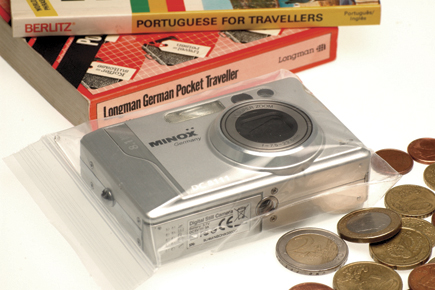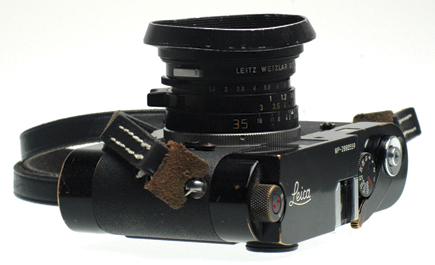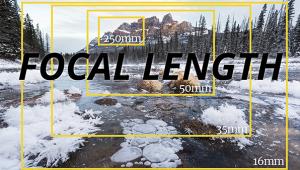Images & Gear; Protect Your Camera And Images; Important Tips From World Travelers
It sometimes seems that there are two kinds of photographers: those who bang their cameras and lenses around mercilessly, and those who baby them. The former see themselves as rough, tough, and macho; the latter are perpetually worried about the slightest risk of damage to their precious cameras.
Neither attitude makes a lot of sense. Yes, you need to be unlucky to damage a good-quality camera, and if you baby it too much, it can stand in the way of taking pictures. On the other hand, why court ill luck by abusing your cameras? And—believe it or not—excessive babying can harm cameras, too.
 |
|
|
Let’s start with that last, improbable assertion about excessive babying. There are two main risks. One is that the camera just gums up from lack of use, as lubricants dry out and dust settles on them. Cameras are made to be used, so use them—and if you don’t use them, then at least exercise them a few times a year. The same applies to auto-diaphragms and focusing mounts.
The other risk is mildew and mold. This is a nuisance on a camera body, but it can be a tragedy on a lens, because the mold can actually etch the glass. Damp and darkness beget mildew and mold, so store your cameras somewhere airy and dry, and preferably in the light. I store my most valuable cameras in a glass-fronted, humidity-controlled cabinet (from Wonderful in China).
Such a cabinet may be over the top for some people, but silica gel (regenerated by heating in the oven) and a sealed box can be your friends. I know one photographer who thought that the best way to store his $15,000 worth of Leica gear was in the original packaging—but he omitted the silica gel. Result: mold on several lenses, including a 50mm f/1 Noctilux. Slight mold can be killed (and may even disappear completely) if you leave the lens in a warm, sunny place with the sun shining into it. Severe mold means a serious repair bill, or a write-off.
 |
|
|
To Filter Or Not To Filter
Sticking with lenses, I’m a great believer in protective filters. I’ll never forget the time in the Himalayas when Frances tripped and the front of her (then new) 35mm f/2.8 PC-Nikkor hit a stone. When we saw the star-shaped crack on the front, we both felt sick. But we unscrewed the filter and the lens was unharmed. Not only had it saved the front element, because it had absorbed and spread the shock evenly around the filter ring, there was no damage to the lens, either. Years later, something similar happened to the orange filter that lives on the front of my 200mm f/3 Vivitar Series 1, which I use only for black and white. Again, no problem.
Don’t believe the people who tell you that filters degrade sharpness. Just try it for yourself. Shoot an optical test target, with and without the filter. The only way I managed to get significant image degradation was with window glass. Every other filter I tried, regardless of price, had no detectable effect. Others have had similar results.
 |
|
|
Lens shades are also good mechanical protection, again because they distribute the effect of an impact into the filter ring. The hood on my 35mm f/1.4 Summilux is downright gnarly from where the lens fell onto granite cobbles in Prague. The lens is still fine. Lens shades also help keep the front glass or filter clean, so you don’t need to clean as often.
Dust Be Gone
Front and back caps keep dust off and out of the lens. Dust can not only mix with lubricants to form an efficient grinding paste and stiffener-upper: it can also get onto film or (worse still) digital sensors. At least with film you get a clean new sensor for each shot!
 |
|
|
Rather than the manufacturers’ front caps, Frances and I use almost exclusively OP/TECH’s flexible neoprene “Hood Hats” which come in a range of sizes and are easier to illustrate than to describe. They are relatively inexpensive; they can push on over a mounted lens hood (shade); and they can be snatched off and stuffed in a pocket, or even dropped on the ground, in a moment. They offer excellent mechanical protection if the camera bangs into something lens first; and of course for a classic rangefinder camera, they remove altogether the risk of the sun burning a hole in the shutter if the camera is left pointing at the sun. Another way to avoid the latter risk is by stopping down to f/16 (actually, f/8 should be all right) when you are not shooting, though you should never leave the lens pointing at the sun for more than a few seconds at a time, at least at wide apertures. (Why, though, are you using wide apertures in bright sun?)
We normally leave the hoods off between shots—it’s not “cap off, shoot, cap on”—but if we’re walking from one place to another we put them on. Or, sometimes, we’ll use OP/TECH’s individual neoprene camera cases—visit www.optechusa.com—which are a cross between a traditional “never ready” case and a wrap: slower and harder to put on than a “never ready” case, but easier and quicker to pull off. Again, they’re easier to illustrate than to describe, but it’s worth remarking that one is seldom in the same hurry to put a camera case on as one is to take it off.
 |
|
|
In Transit
We quite often use OP/TECH neoprene cases for transport, too, because they allow us to put the cameras in hard-side or soft-side camera bags, even without dividers. This brings us to another point about protecting cameras: vibration. High-density foam (as used for most dividers in soft-sides) gives maximum protection from knocks, while low-density foam (the cutout sort found in most hard-sides) gives more protection from vibration. Neoprene is pretty good at both, though it’s closer to low-density foam than high.
Because I’ve ridden motorcycles for over 40 years, and because my only car is a 1972 Land Rover 88”, I’m more aware of vibration than most people. I remember opening the top box on my motorcycle in about ’80 and finding that the back of my Hasselblad 500C was all but detached: the vibration had loosened the screws that held the faceplate to the back proper. After that I was a lot more careful, though on a motorcycle tour of India a decade later an internal element on my 200mm f/3 Vivitar Series 1 unscrewed itself slightly and I couldn’t use the lens until it was repaired. Current equipment is unlikely to be any more vibration resistant.
 |
|
|
You can also protect cameras and lenses from vibration by packing them on top of (or wrapped in) sweaters or other soft clothes: use Zip Loc or similar bags to keep fluff and fibers out of the works. Zip Locs are also ideal for keeping dust out of your cameras when they are being transported under harsh conditions, e.g., in the desert. As an aside on this, although I wouldn’t use a camera in a sandstorm (I’ve only ever been in one, in pre-revolutionary Libya in ’60), I don’t hesitate to use my cameras in the desert or on the beach under normal conditions. I have seen “walkie” (beach photographer) Leicas from the ’30s to ’50s that survived decades of this treatment, so a few hours or even days won’t hurt. And, of course, a bag that keeps dust out will keep water out, too: point-and-shoots are especially susceptible to water damage, even in a pocket.
- Log in or register to post comments

















































